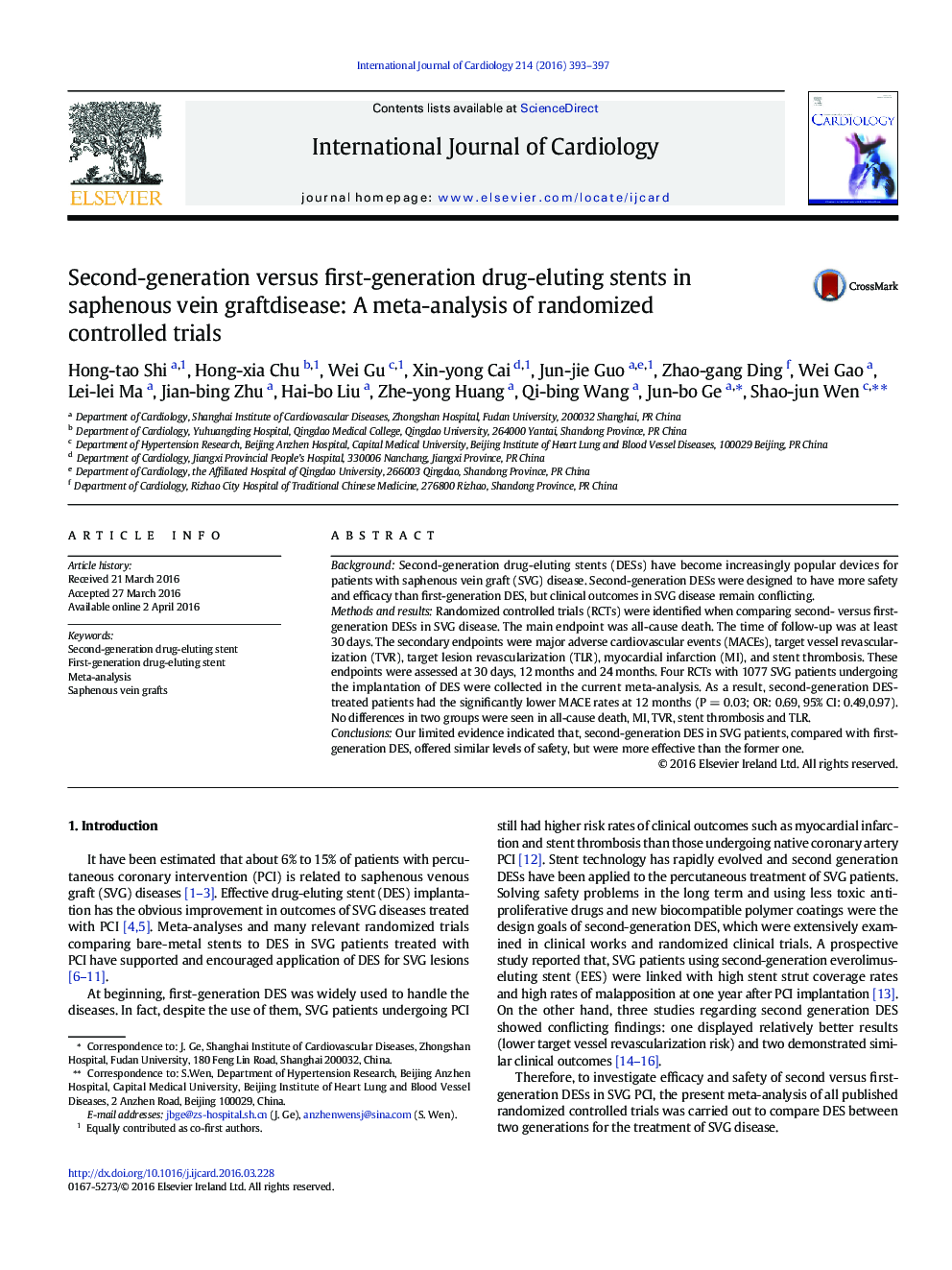| Article ID | Journal | Published Year | Pages | File Type |
|---|---|---|---|---|
| 5964662 | International Journal of Cardiology | 2016 | 5 Pages |
BackgroundSecond-generation drug-eluting stents (DESs) have become increasingly popular devices for patients with saphenous vein graft (SVG) disease. Second-generation DESs were designed to have more safety and efficacy than first-generation DES, but clinical outcomes in SVG disease remain conflicting.Methods and resultsRandomized controlled trials (RCTs) were identified when comparing second- versus first-generation DESs in SVG disease. The main endpoint was all-cause death. The time of follow-up was at least 30Â days. The secondary endpoints were major adverse cardiovascular events (MACEs), target vessel revascularization (TVR), target lesion revascularization (TLR), myocardial infarction (MI), and stent thrombosis. These endpoints were assessed at 30Â days, 12Â months and 24Â months. Four RCTs with 1077 SVG patients undergoing the implantation of DES were collected in the current meta-analysis. As a result, second-generation DES-treated patients had the significantly lower MACE rates at 12Â months (PÂ =Â 0.03; OR: 0.69, 95% CI: 0.49,0.97). No differences in two groups were seen in all-cause death, MI, TVR, stent thrombosis and TLR.ConclusionsOur limited evidence indicated that, second-generation DES in SVG patients, compared with first-generation DES, offered similar levels of safety, but were more effective than the former one.
